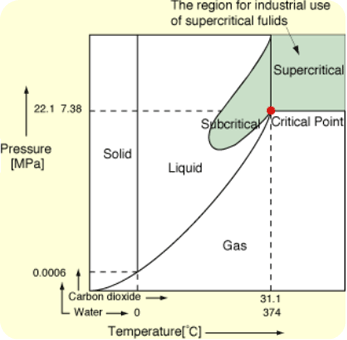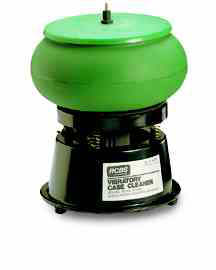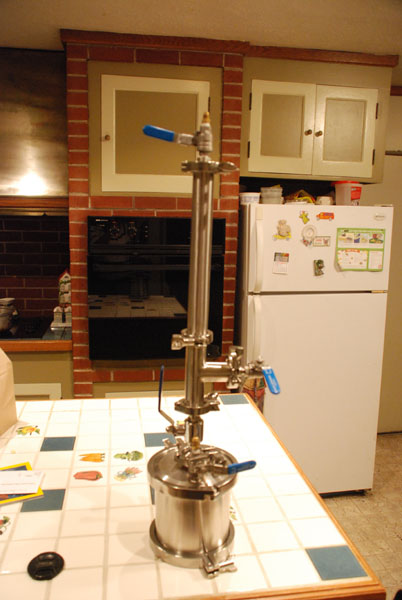Note: This process works for both winterized product and for an Ethanol extraction.
In the following example, total volume of Ethanol-cannabis oil, 400ml.
The first step in the process of purging Ethanol from cannabis oil is to remove the bulk of Ethanol from the solution. This could take some time depending on volume.
- Set the Probe Temp on the CAT MCS78 to 125°C., and the Plate Temp to 225°C or higher if the volume you’re working with is greater than 500ml.
- Set the Motor Speed between 60 to 70 rpm’s or higher depending on solution viscosity.
- While the boiling point of Ethanol is 79.4°C, the Probe Temp is set at 125°C, otherwise if set at 79.4°C, (Ethanol boiling point) the MCS78 would automatically adjust the hotplate, the solution temperature-Probe Temp would reach 79.4°C slowly, so as not to overshoot set Probe Temp, and you’d have a weak boil, rather than a roiling boil, which is optimal for this process.
- The Probe Temp-solution temp will not surpass 79.4°C, depending on atmospheric conditions until most of the Ethanol has evaporated off. When the solution temperature- Probe Temp reaches 85°C, set the Probe Temp to 50°C. You don’t have to reset the Plate Temp; it automatically adjusts after you set the Probe Temp.
- Once the solution temperature- Probe Temp reaches 50°C, add 10 drops of distilled water for every 20mls of oil mixture. Process the solution for an hour.
- After the solution has processed for an hour, set the Probe Temp to 125°C. When the solution temp-Probe Temp passes 90°C, some decarboxylation and water evaporation start to occur; the solution will begin to bubble as the Probe Temp-solution temp rises. The small bubbles form as C02 is boiled off the THC-A. This is an indication of decarboxylation.
- When the decarboxylation process has been completed, all bubbling stops, set the Probe Temp to 55°C, and process for 48 hours. After processing there should be only trace elements of Ethanol, 54-32ppm. We winterized two batches of C02 extractions for this experiment, one with 200 proof Ethanol and the other, 190 proof. Both yielded approx. 150 grams of absolute. Residual Solvent Analysis, 200 proof. Residual Solvent Analysis, 190 proof.
Disclaimer- Assumption of Risk:
Using the CAT MCS78 Hotplate Stirrer to purge residual Ethanol from cannabis extract or an Ethanol extraction carries inherent risks that cannot be eliminated regardless of the care taken to avoid such risks. The specific risks include, but are not limited to: minor bodily injury, major bodily injury; death; loss of or damage to property. You understand and appreciate the risks inherent in this process, including but not limited to those set forth herein, and you hereby assert and agree that operating the CAT MCS78 Hotplate Stirrer for this process is voluntary and that you knowingly assume all such risks.




Here are the 190 proof and 200 proof residual solvent lab analysis:
190 Proof 190-proof-residual-solvent-analysis
200 Proof 200-proof-residual-solvent-analysis






Is the final 48 hours at 55 C really necessary? What's the reasoning behind that extra step? Is there any data to support this? Or was this more or less, "this is what we did, and since it worked for us, we're publishing it as an SOP"?
Your method evaporates and decards at 125°C or 257°F. If I wanted to vacuum distill could I decard at the same time but at the lower temperature. In other words if I drop the temp under vacuum will the THCA still convert to THC
I wonder what the starting solution might have been. Could this device be used in the the latter stages of the QWET process, without any recovery or vacuum chamber? I don't see how you could end up with so much solution remaining, as shown in the images.